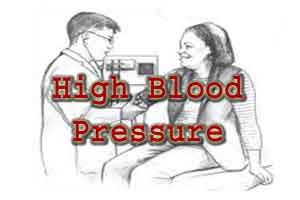- Home
- Editorial
- News
- Practice Guidelines
- Anesthesiology Guidelines
- Cancer Guidelines
- Cardiac Sciences Guidelines
- Critical Care Guidelines
- Dentistry Guidelines
- Dermatology Guidelines
- Diabetes and Endo Guidelines
- Diagnostics Guidelines
- ENT Guidelines
- Featured Practice Guidelines
- Gastroenterology Guidelines
- Geriatrics Guidelines
- Medicine Guidelines
- Nephrology Guidelines
- Neurosciences Guidelines
- Obs and Gynae Guidelines
- Ophthalmology Guidelines
- Orthopaedics Guidelines
- Paediatrics Guidelines
- Psychiatry Guidelines
- Pulmonology Guidelines
- Radiology Guidelines
- Surgery Guidelines
- Urology Guidelines
High household pollution tied to high BP in women

Women exposed to higher levels of air pollution at residence have high blood pressure, high BP ,finds new study.The study has been published in the journal Epidemiology.
Researchers at Barcelona Institute for Global Health (ISGlobal) set out to study association of air pollution with high blood pressure(BP) in India.Long-term exposure to air pollution has been previously associated with a higher risk of high blood pressure in high-income countries, but the study has been conducted in a lower middle-income country where burdens of air pollution and high blood pressure (BP) are projected to increase.The results show that women exposed to higher levels of air pollution at residence have a higher prevalence of increased blood pressure(BP).
"Women spend most of their time near their households in this study area - 83% of their daily time as compared to 57% for men -, which could explain why we observe a stronger association in women than in men", explains Ariadna Curto, first author of the study.
The researchers in the study studied 5,531 adults from 28 peri-urban villages near Hyderabad city, in Southern India. The researchers measured systolic and diastolic blood pressure (BP) of participants and estimated their annual residential exposure to fine particulate matter (PM2.5) and black carbon. The participants also answered a survey to determine socio-economic status, lifestyle (including physical activity levels and salt intake), and household characteristics, including the type of cooking fuel generally used (biomass or clean).
Notably, all study participants were exposed to fine particulate matter levels above the 10 μg/m³ limit recommended by the World Health Organisation (WHO). Average exposure to PM2.5 in this study was 33 μg/m3. Based on the blood pressure measurements, almost half of participants (46%) were identified as hypertensive, with high proportions of participants with undiagnosed and untreated blood pressure (BP).
The results show that an increase of 1μg/m3 in PM2.5 exposure was associated with a 4% increase in hypertension prevalence in women, as well as a higher systolic and diastolic blood pressure -an increase of 1,4 mmHg and 0.87 mmHg, respectively-. In men, the association observed was weaker.
The research indicates that long-term exposure to particulate matter is associated with a higher prevalence of hypertension, regardless of the type of fuel used for cooking. "Other studies have found that women that cook with solid fuels such as biomass tend to have higher blood pressure than those using clean fuels, although our data is not powered enough to support this, our study suggests that the effects of outdoor air pollution on cardiovascular health may be independent from those of indoor air pollution", she stresses. "In the light of our lack of association with black carbon, it is important to keep in mind that this is a peri-urban area, where the sources and chemical makeup of air pollution differ to urban areas mostly dominated by traffic sources", adds Curto.
Cathryn Tonne, CHAI project and study coordinator, explains that the mechanisms by which air pollution could contribute to high blood pressure "include inflammation and oxidative stress, which may lead to changes in arterial function."
"Although further epidemiological evidence is needed to confirm our findings, ideally through longitudinal studies, these data suggest that public policies aimed at reducing air pollution will greatly benefit cardiovascular health," concludes Tonne.
blood pressureBPBP complicationsBP medicinescomplicationshighhigh blood pressurehigh BPhouseholdHypertensionhypertensivepollutantspollutiontiedwomen
Next Story
NO DATA FOUND

Disclaimer: This site is primarily intended for healthcare professionals. Any content/information on this website does not replace the advice of medical and/or health professionals and should not be construed as medical/diagnostic advice/endorsement or prescription. Use of this site is subject to our terms of use, privacy policy, advertisement policy. © 2020 Minerva Medical Treatment Pvt Ltd